by Jean-François Loiseau
published on June 17, 2025
photo credit: © Vatican Media – All rights reserved
On May 8, 2025, following the announcement of the election of Pope Leo XIV, born Robert Francis Prevost, the international genealogical community, particularly the French-speaking community, quickly became interested in his origins.
The surname "Prevost," with its obvious French consonance, immediately attracted attention. Thanks to a collaborative effort conducted on the "Genealogy Center" Discord server,
a group of researchers sketched out the broad outlines of his ancestry in the first hours following the election. Since then, Leo XIV's family tree has been expanded and can be viewed online here.
This article does not aim to trace the Pope's entire ancestry, which spans several countries (France, Italy, Cuba, and the United States),
but to shed light on the segments of his maternal line leading to New France, particularly Quebec and the Perche region.
Robert Francis Prevost was born on September 14, 1955, in Chicago, Illinois (United States), to Louis Marius Prevost and Mildred Agnes Martinez, a librarian, who were married in the same city on January 25, 1949[1].
Contrary to what his surname might suggest, it is not the paternal line, but the maternal branch that allows us to go back to the first settlers of New France. The team of Pierre Gendreau-Hetu, director of the Genealogie Quebec project, in association with the Programme de recherche en demographie historique (PRDH) of the Universite de Montreal, has highlighted a genealogical link between Mildred Agnes Martinez and Pierre Boucher (1622–1717), governor of Trois-Rivieres, founder of Boucherville and ennobled by Louis XIV[2].
At first, this ancestry could not be stated with certainty, due to documentary gaps, particularly in the Louisiana archives of the 18th century,
although the converging sources were considered solid. On June 8, 2025, experts from the Genealogy Quebec project officially confirmed the French-Canadian roots of Leo XIV,
based on autosomal DNA tests (on non-sex chromosomes) carried out in the United States but identified and analyzed by them[3].
Mildred Agnes Martinez was the daughter of Joseph Nerval Martinez, a Cuban-born cigar maker, and Louise Baquie, born in New Orleans on February 4, 1868.
The latter's grandfather, Aristide Baquie, born in Pointe-à-Pitre (Guadeloupe) on September 25, 1811, migrated to Louisiana. From his union with Celeste Lemelle[4], a son was born, Ferdinand David Baquie, father of Louise.
Celeste Lemelle was herself the daughter of Louis Lemelle and Olympe Celeste Grandpre, both designated as "free people of color" in the marriage contract they entered into on October 16, 1798, at the Opelousas Post (Louisiana)[5]. This document provides valuable genealogical information: Louis Lemelle is said to be “a free mulatto or carteron[6], native of the said post, natural son of Mr. François Lemelle and Marie Jeanne Lemelle, a free mulatto, his father and mother”; His wife is described as "Celeste Olimpie Grandpres, a free woman of French origin, native of Pointe Coupee in this province, aged seventeen, natural daughter of Mr. Charles Grandpres and Jeanette Clapion, a free mulatto, her father and mother."
Although Olympe Celeste Grandpre's birth certificate has not been located, her year of birth can therefore be estimated at around 1781. At this time, Louisiana was under Spanish control following the Treaty of Fontainebleau of November 3, 1762, by which Louis XV ceded the territory to Spain to prevent a British takeover.
|
LEMELLE Louis ° ca 1772 Opelousas LA |
GRANDPRE Olympe Celeste ° ca 1781 La Pointe Coupee LA ✝ 1833 New Orleans LA |
||||||
|
⚭ 1798 Opelousas LA
|
|||||||
|
BAQUIE Aristide ° 1811 Pointe-à-Pitre (Guadeloupe) ✝ 1822 New Orleans LA |
LEMELLE Celeste ° ca 1814 LA ✝ 1877 New Orleans LA |
||||||
|
|
|||||||
|
|
|||||||
|
BAQUIE Ferdinand David ° 1837 New Orleans LA ✝ 1883 New Orleans LA |
GRAMBOIS Eugenie ° 1838 ✝ 1907 New Orleans LA |
||||||
|
⚭ 1864 New Orleans LA
|
|||||||
|
|
|||||||
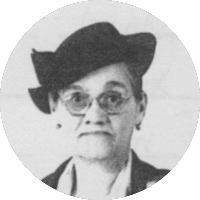 BAQUIE Louise ° 1868 New Orleans LA ✝ 1945 Des Plaines LA |
|||||||
Charles Louis Boucher, Lord of Grandpre served under the Spanish regime as commander of the Pointe Coupee military post from 1776 to 1781 and as lieutenant-governor of the Red River district (stationed at Avoyelles)[7]. It therefore seemed highly likely that he was the father of Celeste Grandpre.
This uncertain link in the lineage was confirmed through DNA testing conducted as part of the Genealogie Quebec project. By comparing the DNA of legitimate descendants of Charles Louis de Grandpre with that of the so-called illegitimate lineage descended from Olympe Celeste Grandpre, genealogical researchers[8] established a conclusive genetic match, thus validating the lineage.
Charles Louis Boucher de Grandpre was the son of Louis Boucher, Lord of Grandpre, squire, baptized in Trois-Rivieres, Quebec, on July 3, 1695, and Therese Gaillard.
Their marriage contract was signed on May 10, 1734, in New Orleans[9]. Louis Boucher is a grandson of Pierre Boucher, seigneur of Boucherville (1622–1717),
and belongs to a lineage already well studied in Canadian genealogical literature[10].
On Louis Boucher's maternal side, we find two other pioneers from Perche, Sebastien Dodier and his wife Marie Belhomme, born in Ige (Orne), and who arrived in Canada around 1632.
The family tree of Pope Leo XIV is published by "The Genealogy Center" on Geneanet, an external website. Access to the entire database is free, but after viewing some data, you must have a personal (free) Geneanet account to continue exploring the genealogical data.
Pope Leo XIV has five French-Canadian ancestors, originated from the Perche region (France). They emigrated to New France in the 17th century.
| Emigrants | Year of Baptism | Place of Baptism (or Birth) | Year of Departure | Year of Death | Place of Death |
|---|---|---|---|---|---|
| Belhomme Marie | 1610 | Ige | 1632* | - | - |
| Boucher Gaspard | 1599* | Mortagne-au-Perche | 1634* | - | Canada |
| Boucher Pierre | 1622 | Mortagne-au-Perche | 1635* | 1717 | Boucherville |
| Dodier Sebastien | 1609 | Ige | 1632* | - | - |
| Lemaire Nicole | 1595 | Mamers | 1635* | - | Trois-Rivieres |
 BOUCHER Gaspard ° ca 1599 Mortagne-au-Perche (Orne) |
 LEMAIRE Nicole ° 1595 Mamers (Sarthe) |
 DODIER Sebastien ° 1609 Ige (Orne) |
 BELHOMME Marie ° 1610 Ige (Orne) |
||||
|
⚭ 1619 Mamers (Sarthe)
|
⚭ ca 1629 (Orne)
|
||||||
|
|
|
||||||
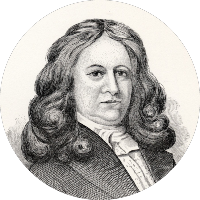 BOUCHER Pierre, Lord of Boucherville ° 1622 Mortagne-au-Perche (Orne) ✝ 1717 Boucherville QC ⚭ 1652 CREVIER Marie Jeanne ° ca 1634 ✝ 1727 Boucherville QC BOUCHER Lambert, Lord of Grandpre° 1656 Trois-Rivieres QC ✝ 1699 Trois-Rivieres QC |
DODIER Catherine ° ca 1634 ✝ 1673 Trois-Rivieres QC ⚭ ca 1653 LE PELLE Pierre ° 1628 Brouage (Charente-Maritime) ✝ Batiscan QC LE PELLE Marie Françoise ° 1654 Trois-Rivieres QC ✝ 1727 Trois-Rivieres QC ⚭ 1668 VAUVRIL Charles, Lord of Blason ° ca 1625 Yzeure (Allier) VAUVRIL de BLASON Marie Marguerite ° 1672 Trois-Rivieres QC ✝ 1730 Trois-Rivieres QC |
||||||
|
⚭ 1693 Quebec QC
|
|||||||
|
|
|||||||
|
BOUCHER Louis, Lord of Grandpre ° 1695 Trois-Rivieres QC ⚭ 1734 GAILLARD Therese 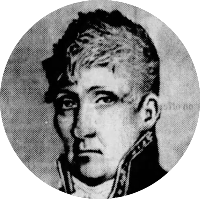 BOUCHER Charles Louis, Lord of Grandpre ° 1745 New Orleans LA ✝ 1809 La Habana (Cuba) ⚭ GLAPION Jeanne GRANDPRE Olympe Celeste ° ca 1781 La Pointe Coupee LA ✝ 1833 New Orleans LA ⚭ 1798 LEMELLE Louis ° ca 1772 Opelousas LA LEMELLE Celeste ° ca 1814 LA ✝ 1877 New Orleans LA ⚭ BACQUIE Aristide ° 1811 Pointe-à-Pitre (Guadeloupe) ✝ 1882 New Orleans LA BAQUIE Ferdinand David ° 1837 New Orleans LA ✝ 1883 New Orleans LA ⚭ 1840 GRAMBOIS Eugenie ° 1838 ✝ 1907 New Orleans LA BAQUIE Louise ° 1868 New Orleans LA ✝ 1945 Des Plaines LA ⚭ 1887 MARTINEZ Joseph Nerval ° 1864 ✝ 1926 Chicago IL MARTINEZ Midred Agnes ° 1911 Chicago IL ✝ 1990 Chicago Heights IL ⚭ 1949 PREVOST Louis Marius ° 1920 Chicago IL ✝ 1997 Homewood IL 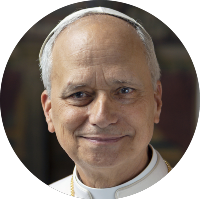 PREVOST Robert Francis ° 1955 Chicago, IL Leo XIV |
|||||||
A partial biography of Charles Louis Boucher, Lord of Grandpre, was published in The Marksville Weekly News on November 27, 1997. An excerpt from the original article is reproduced here.
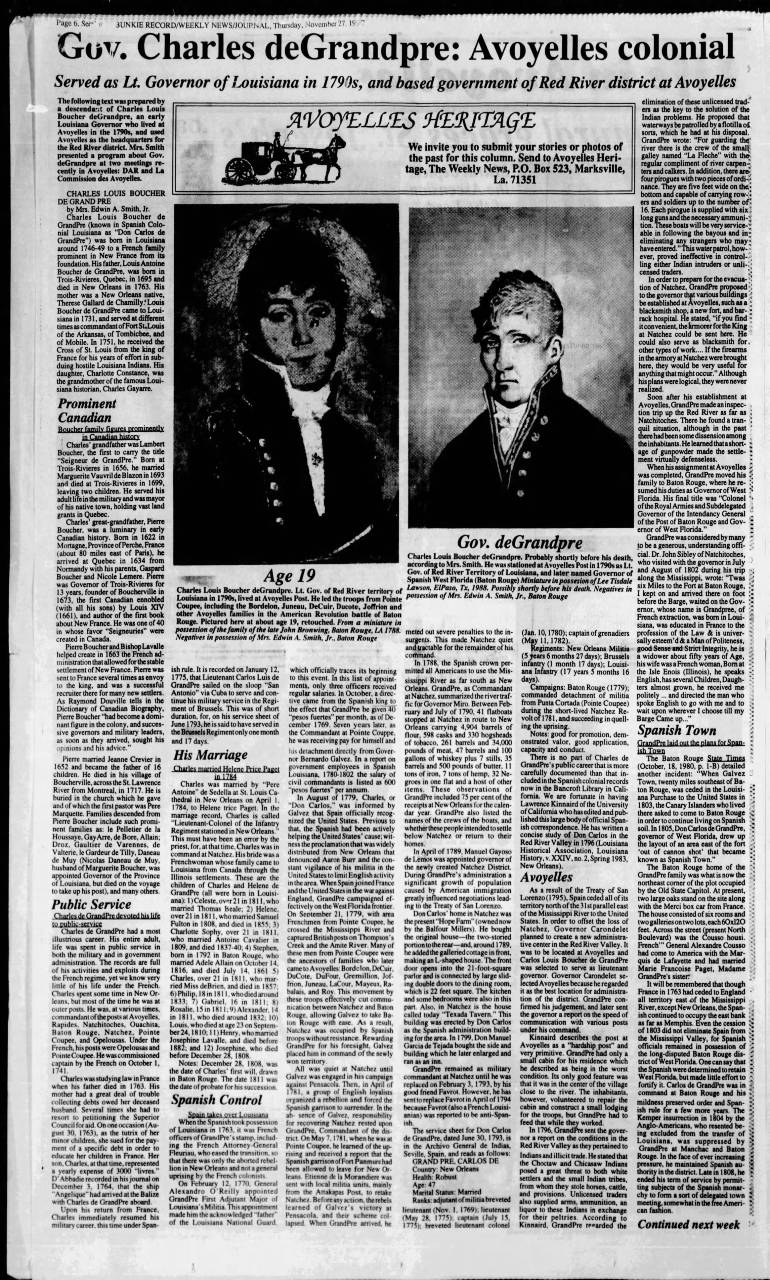
Article from The Marksville Weekly News
Marksville, Louisiana • November 27, 1997 • Page 6
On February 12, 1770, General Alexandro O'Reilly appointed GrandPre First Adjutant Major of Louisiana's Militia. This appointment made him the acknowledged "father" of the Louisiana National Guard, which officially traces its beginning to this event. In this list of appointments, only three officers received regular salaries. In October, a directive came from the Spanish king to the effect that GrandPre be given 40 "pesos fuertes" per month, as of December 1769. Seven years later, as Commandant at Pointe Couppe, he was receiving pay for himself and his detachment directly from Governor Bernardo Galvez. In a report on government employees in Spanish Louisiana, 1780-1802 the salary of civil commandants is listed as 600 "pesos fuertes" per annum.
In August of 1779, Charles, or "Don Carlos" was informed by Galvez that Spain officially recognized the United States. Previous to that, the Spanish had been actively helping the United States' cause ; witness the proclamation that was widely distributed from New Orleans that denounced Aaron Burr and the constant vigilance of his militia in the United States to limit English activity in the area. When Spain joined France and the United States in the war against England, GrandPre campaigned effectively on the West Florida frontier. On September 21, 1779, with area Frenchmen from Pointe Coupee, he crossed the Mississippi river and captured British posts on Thompson's Creek and the Amite River. Many of these men from Pointe Coupee were the ancestors of families who later came to Avoyelles : Bordelon, DeCuir, DuCote, DuFour, Gremillion, Joffrion, Juneau, LaCour, Mayeux, Rabalais, and Roy. This movement by these troops effectively cut communication between Natchez and Baton Rouge, allowing Galvez to take Baton Rouge with ease. As a result, Natchez was occupied by Spanish troops without resistance. Rewarding GrandPre for his foresight, Galvez placed him in command of the newly won territory.
All was quiet at Natchez until Galvez was engaged in his campaign against Pensacola. Then, in April of 1781, a group of English loyalists organized a rebellion and forced the Spanish garrison to surrender. In the absence of Galvez, responsibility for recovering Natchez rested upon GrandPre, Commandant of the district. On May 7, 1781, when he was at Pointe Coupee, he learned of the uprising and received a report that the Spanish garrison of Fort Panmure had been allowed to leave for New Orleans. Etienne de la Morandiere was sent with local militia units, mainly from the Attakapas Post, to retake Natchez. Before any action, the rebels learned of Galvez's victory at Pensacola, and their scheme collapsed. When GrandPre arrived, he meted out severe penalties to the insurgents. This made Natchez quiet and tractable for the remainder of this command.
 (printable)
(printable)
Perche-Quebec has discovered numerous family ties between the Pope and figures
from the political world (Hillary Clinton, Justin Trudeau), the Catholic Church (Marc Ouellet),
of the song (Madonna, Celine DionJustin Bieber,
or even cinema (Xavier Dolan, Ryan Gosling, Angelina Jolie).
All these personalities have in common in their family tree pioneers of New France and notably Percheron pioneers.
For example, in the ancestry of Leo XIV, we note the Percheron pioneer Gaspard Boucher, an ancestor of most of the aforementioned personalities, originally from Mortagne-au-Perche (Orne).
As surprising as it may seem, these kinships are nothing exceptional. Since the Percheron pioneers were among the first to populate New France,
most people with Franco-Quebecois ancestors have Percheron blood and are more or less distant cousins. The genealogy of Pope Leo XIV is a striking illustration of this.
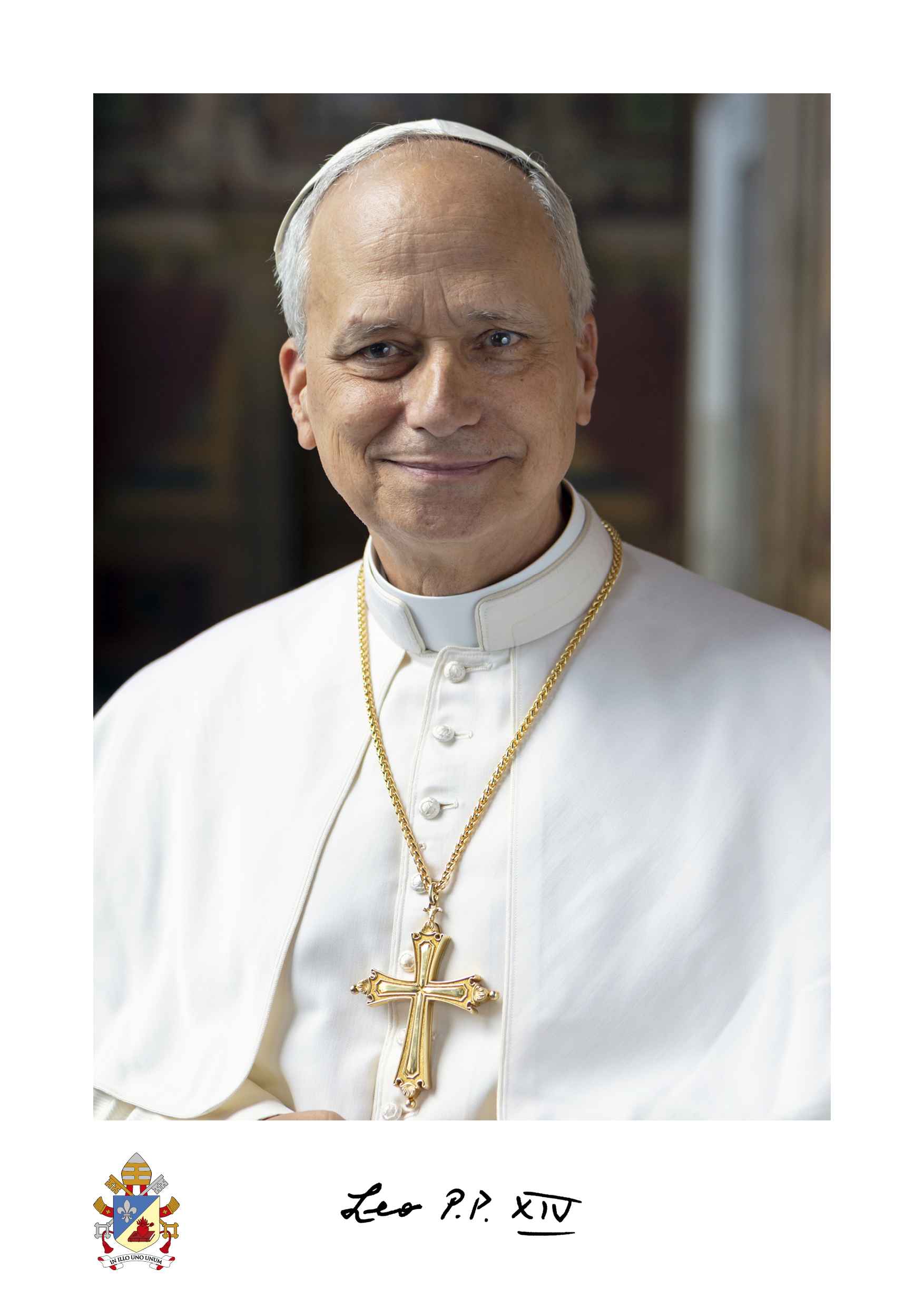
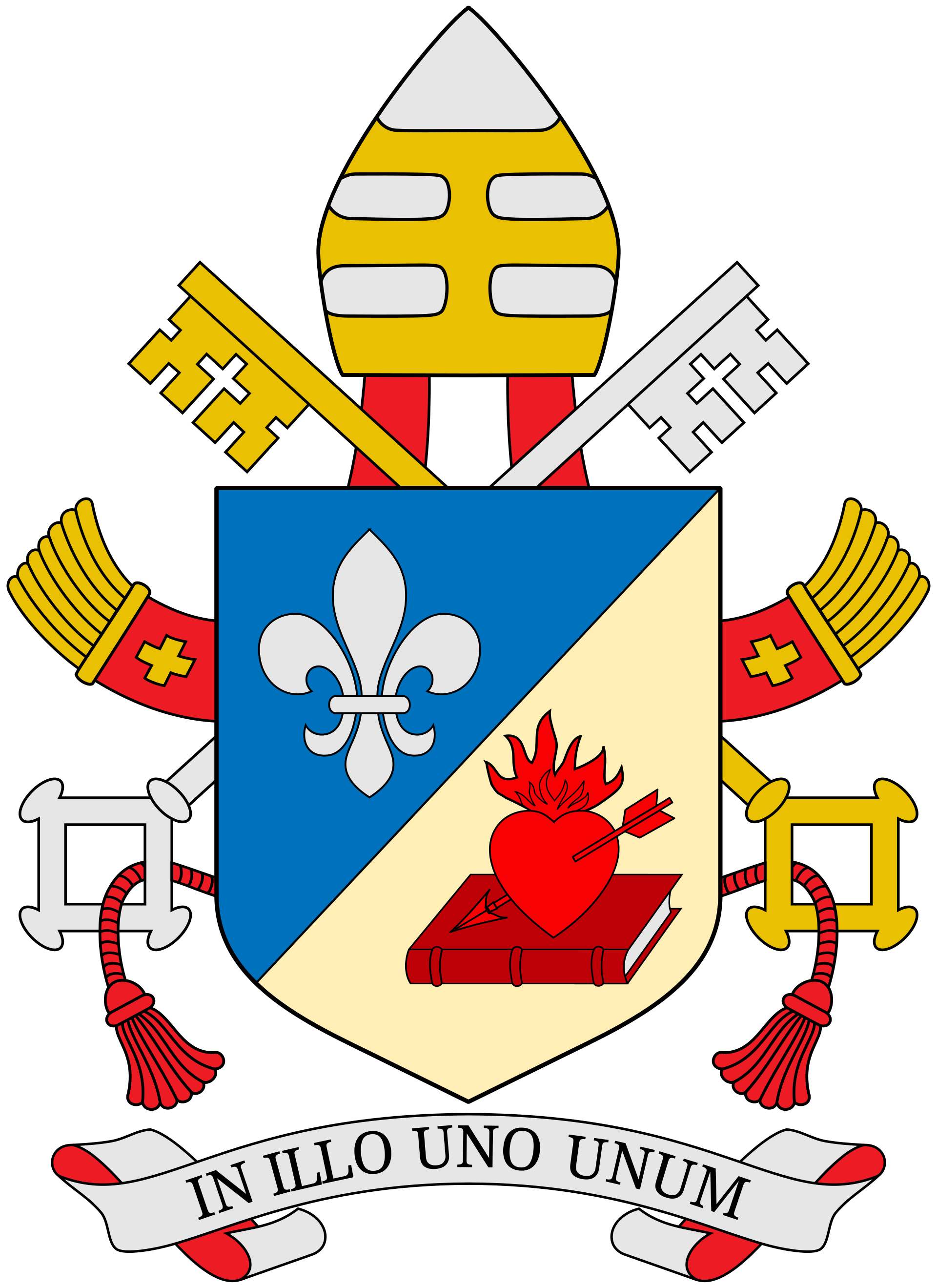
Coat of arms of Leo XIV
Official coat of arms in Italian
Tagliato : nel 1° d’azzurro a un giglio d’argento ; nel 2° di bianco, al cuore ardente e trafitto da una freccia posta in sbarra, il tutto di rosso e sostenuto da un libro al naturale.
Symbolism
The coat of arms reflects Pope Leo XIV's desire to promote love for Jesus, veneration of Mary, and unity within the Church. It embodies his faith and his Augustinian spiritual heritage.
The closed book, on which is found a heart pierced by an arrow, recalls Saint Augustine's conversion experience, which he explained with the words "Vulnerasti cor meum verbo tuo", "You have pierced my heart with your Word.".
The external ornaments include the keys of Peter, made of gold and silver, referring to the power to bind and loose granted by Christ to the Apostle and his successors (Gospel of Saint Matthew, 16:19).
The gold one represents the power of heaven, the silver one, the power on earth. The first pope to include the keys on his coat of arms was Innocent III, pope from 1198 to 1216.[1]
Motto
The Latin motto In illo Uno unum means "In Him who is One, we are One." It is taken from a commentary by Saint Augustine on Psalm 127 and expresses the idea that Christians are united in Jesus Christ.[2]